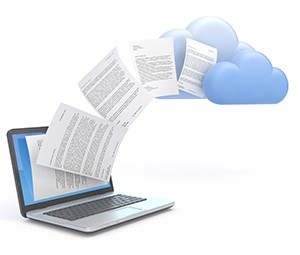Computer Replacement
Your parents told you that you will be receiving a new computer within the next week as a reward for doing well in school in the last semester. They also told you that they will give your old computer to your younger sibling. Before they will replace your computer, they told you to back up anything that is important. What types of file do you feel are important to back up?
And while the answer entirely depends on what files you have on your computer and which ones you can t live without, here s a list of the most common files you ll definitely want to consider (including a few that are commonly forgotten).
10) Pictures- When people are asked what they would grab from their home in the event of a fire, one of the most common responses is the family photo album. Think about how many digital photos you have uploaded from your camera and don t have anywhere else but on your computer.
9) Music- Let s face it, your extensive music collection would take forever to try and recreate. You ll never find that random copy of the 88 Oldsmobile jingle, let alone find time to reorganize your library.
8) Videos- Whether they re backup copies of your video collection, home videos or just uploaded video camera footage, you re reel y not going to want to lose it.
 7) Documents- Between thesis papers, business documents, and maybe even a copy of your will or a personal journal, you don t want to lose your documents. Allow me to share three documents I m glad I had another copy of: my journal, a spreadsheet with a list of wedding invitees and my sister s Senior year English papers.
7) Documents- Between thesis papers, business documents, and maybe even a copy of your will or a personal journal, you don t want to lose your documents. Allow me to share three documents I m glad I had another copy of: my journal, a spreadsheet with a list of wedding invitees and my sister s Senior year English papers.
7b) Templates- Especially don t forget to backup any custom document templates you ve downloaded or macros you ve created.
6) Health and Financial Records- If you keep a budget, your financial documents or important health records on your computer, don t forget to back them up.
5) Email addresses, folders, and even emails- Unless they re all hosted online, it s a pain to try and track them all down again. Same goes for your cellphone; if you can backup your contacts, you should.
4) Internet bookmarks, shortcuts, etc.- You ve spent a good deal of time customizing your browser experience and saving your favorites/bookmarks/shortcuts. To make recovering that info a cinch, back it up.
3) Downloaded software- So many programs and applications are downloaded online. If you ve obtained software online (and especially if you paid for it), don t forget to save a backup copy.
2) Drivers- They may come in small installments, but chances are that you ve got a ton of drivers, updates and patches for software/hardware/applications that you d be hard pressed to have time to find again.
1) Game Saves- Playing the game was a blast, but playing it AGAIN just to get back to the point that you were at?; Worthy of controller throwing.
Sources Retrieved from: http://www.toptenreviews.com/services/articles/top-10-files-to-backup/







